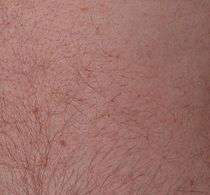āda
Latvian

Etymology
From Proto-Baltic *ād-, from Proto-Indo-European *ādʰ-, a parallel form of *āǵ- (“goat”) (whence Latvian āzis (“billy-goat”), q.v.). The term may originally have been adjectival (cf. Lithuanian ódinis (“skin, of skin”)). A relationship between terms for “goat” and “skin” is not infrequent in Indo-European; cf. Russian коза (kozá, “goat”), кожа (kóža, “skin”), or Sanskrit अजा (ajā, “she-goat”), अजिनम् (ajínam, “skin”). In Latvian, the term expanded its meaning to cover both human and animal skin (or fur), as well as animal skin as material for making objects, ideas often distinguished in other languages (e.g., German Haut, Fell, and Leder). The original meaning is perhaps preserved in the Finnish borrowing vuota (“(raw) hide, pelt”). Cognates include Lithuanian óda, Sanskrit अत्कः (átkaḥ, “armor, outfit”) (< *aǵ-ko-), Ancient Greek ἀσκός (askós, “leather wine-skin”), Albanian dhi (“goat”) (< *ādʰ-i).[1]
Noun
āda f (4th declension)
- (anatomy) skin (external cover of the (human or animal) body)
- sejas āda ― facial skin
- gluda, maiga āda ― smooth, soft skin
- krunkaina āda ― wrinkled skin
- ādas slimības ― skin diseases
- pārstādīt ādu ― transplant skin
- kopt ādu ― to take care of one's skin
- čūska met ādu ― the snake is throwing (= leaving) its skin
- zirgam uz kakla noberzta āda ― the horse has sore skin on its neck
- leather (animal skin especially treated to make clothes)
- ādas apstrādāšana ― leather processing
- ādu fabrika ― leather factory
- ādas mētelis, josta, cimdi ― leather coat, belt, gloves
- kurpes ar ādas zoli ― shoes with leather soles
- miecēt ādas ― to tan skin
Declension
Derived terms
- bebrāda, bebra āda
- caunāda, caunas āda
- sermuļāda, sermuļa āda
- priekšāda, priekšādiņa
References
- Karulis, Konstantīns (1992), “āda”, in Latviešu Etimoloģijas Vārdnīca (in Latvian), Rīga: AVOTS, →ISBN